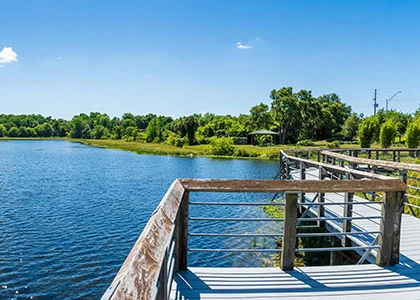As you initiate your journey into new construction build-to-rent projects, sustainable building practices are not just an ethical choice but an increasingly crucial business strategy. The opportunity to implement environmentally responsible processes presents itself from the ground up.
Whether you’re evaluating site selection, design, materials, or construction methods, choosing sustainable options helps ensure your project contributes positively to the environment. With the advent of green construction, you can embrace practices that are mindful of resource efficiency and seek to minimize the environmental impact throughout the building’s lifecycle.
Understanding the principles of sustainable construction gives you the advantage of foresight, as you design buildings that are not just for today’s renters but for future generations. Innovative techniques, such as prefabrication and modular construction, have revolutionized the industry by reducing waste and optimizing material usage. In addition, adopting methods like 3D printing not only trims down labor costs but also ensures higher precision and quality control.
As renters become more environmentally conscious, your commitment to sustainable building materials and practices positions your build-to-rent projects as cutting-edge and socially responsible. Lower lifecycle costs and potential government incentives further sweeten the deal, painting a favorable economic picture for forward-thinking investors and developers like you who prioritize sustainability.
Essentials of Sustainable Building Practices
In new construction build-to-rent projects, the focus on sustainability is essential to create environmentally responsible and resource-efficient structures throughout a building’s life cycle.
Energy Efficiency and Renewable Energy Integration
To reduce the consumption of non-renewable resources, your project should aim for high energy efficiency. This can include the installation of LED lighting, energy-efficient HVAC systems, and quality insulation. Integrating renewable energy sources, such as solar panels or wind turbines, helps further decrease the ecological footprint.
Water Conservation and Management
Effective water conservation strategies such as low-flow fixtures and dual plumbing systems for water recycling contribute to the sustainability of a building. Implementing smart water management systems is vital for reducing water waste and preserving this precious resource.
Sustainable Building Materials and Resources
Selecting sustainable building materials such as reclaimed wood, recycled metal, or locally sourced stone not only minimizes environmental impact but also supports the local economy. It’s important to ensure that the materials you choose do not emit harmful chemicals, thus contributing to a healthier living environment.
Indoor Environmental Quality
The quality of the indoor environment is paramount for the health and well-being of the occupants. You should ensure good indoor air quality by using low-VOC paints and adhesives, and by installing adequate ventilation systems. Consider the acoustics and access to natural light, which can greatly improve the livability of a space.
Land Use and Ecological Considerations
When selecting the site for your project, preserve natural habitats, and maintain biodiversity by minimizing land disturbance. Utilizing previously developed land can reduce the impact on the environment and consider incorporating green spaces that can enhance the ecological value of your project.
Waste Reduction and Management
Throughout the construction process, aim to minimize waste by reusing materials and recycling whenever possible. Implementing waste sorting and reduction programs is a critical step towards better waste management, helping to divert materials from landfills and reduce environmental pollution.
Implementing Sustainable Practices in New Build-to-Rent Projects
When you embark on new build-to-rent projects, it is vital to integrate sustainable practices from the early stages to ensure longevity, resource efficiency, and environmental respect. Careful consideration in site selection, cost-benefit analysis of green investment, active stakeholder engagement, use of sustainable construction methods, and compliance with certification standards lay the groundwork for successfully sustainable projects.
Site Selection and Planning
You must evaluate the environmental impact of your project’s location. Select sites with access to public transportation and amenities to reduce carbon emissions. Consider the natural landscape to minimize disruption and promote biodiversity.
Cost-Benefit Analysis of Green Building
Conduct a thorough cost-benefit analysis to understand the financial impacts of sustainable building features. Long-term savings on energy costs often justify the initial investment in high-efficiency systems and materials.
Engagement of Stakeholders
Engage with local communities, investors, and future tenants early on. Your open communication will help align the build-to-rent project’s objectives with the stakeholders’ values and expectations on sustainability.
Sustainable Construction Techniques
Implement construction techniques that reduce waste, such as prefabrication or modular building. Choose materials that are sustainably sourced and have a low environmental footprint to ensure your project’s sustainability.
Certification Standards and Compliance
Adhere to recognized sustainability certification standards, such as LEED or BREEAM, to benchmark your project’s environmental performance. Compliance with these standards not only adds credibility but also increases the project’s desirability to environmentally conscious renters.

